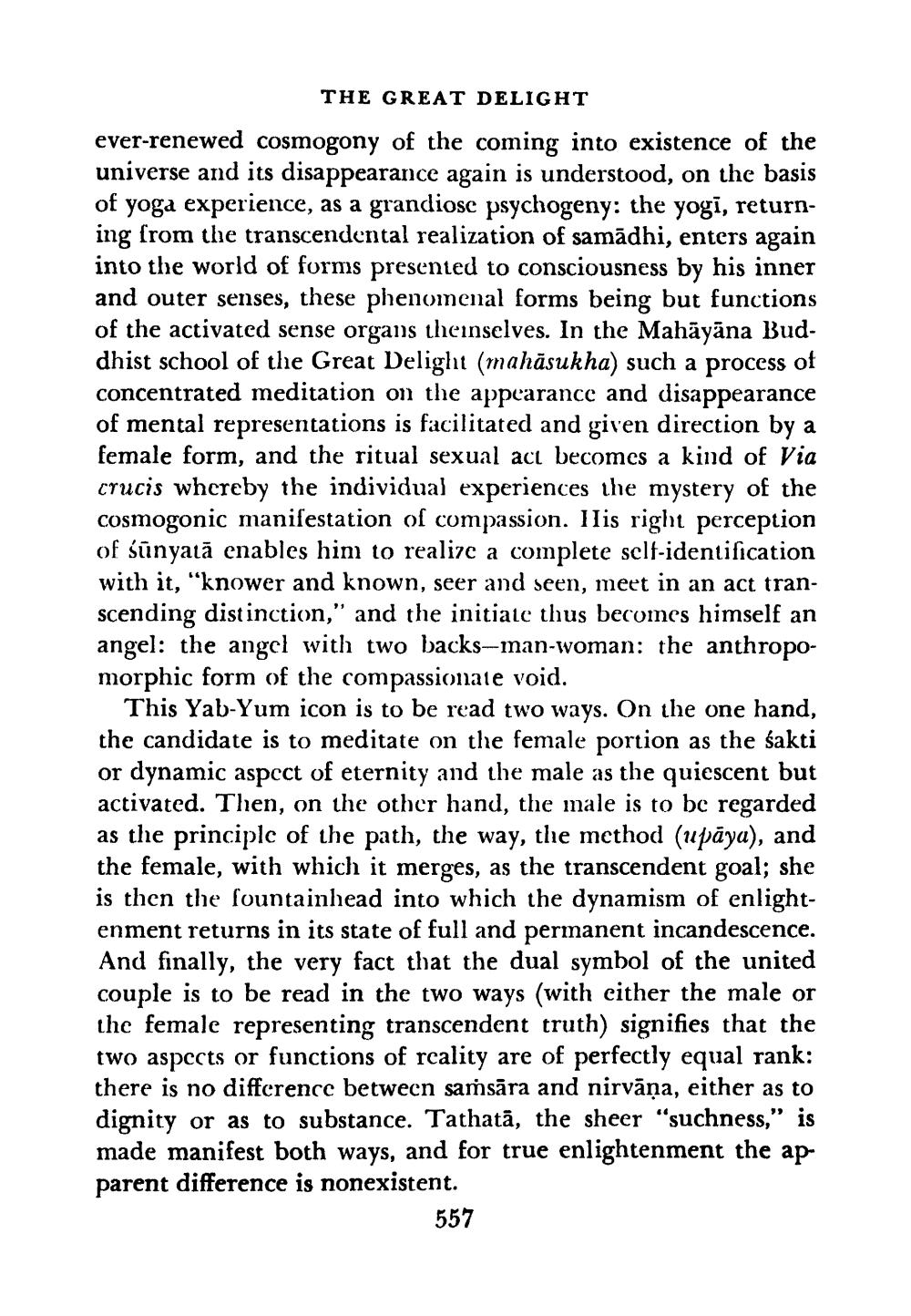________________
THE GREAT DELIGHT ever-renewed cosmogony of the coming into existence of the universe and its disappearance again is understood, on the basis of yoga experience, as a grandiose psychogeny: the yogi, returning from the transcendental realization of samādhi, enters again into the world of forms presented to consciousness by his inner and outer senses, these phenomenal forms being but functions of the activated sense organs theinselves. In the Mahāyāna Buddhist school of the Great Delight (mahāsukha) such a process of concentrated meditation on the appearance and disappearance of mental representations is facilitated and given direction by a female form, and the ritual sexual act becomes a kind of Via crucis whereby the individual experiences the mystery of the cosmogonic manifestation of compassion. His right perception of sūnyatā enables him to realize a complete self-identification with it, “knower and known, seer and seen, meet in an act transcending distinction," and the initiate thus becomes himself an angel: the angel with two backs-man-woman: the anthropomorphic form of the compassionate void.
This Yab-Yum icon is to be read two ways. On the one hand, the candidate is to meditate on the female portion as the sakti or dynamic aspect of eternity and the male as the quiescent but activated. Then, on the other hand, the male is to be regarded as the principle of the path, the way, the method (upāya), and the female, with which it merges, as the transcendent goal; she is then the fountainhead into which the dynamism of enlightenment returns in its state of full and permanent incandescence. And finally, the very fact that the dual symbol of the united couple is to be read in the two ways (with either the male or the female representing transcendent truth) signifies that the two aspects or functions of reality are of perfectly equal rank: there is no difference betwecn samsāra and nirvāṇa, either as to dignity or as to substance. Tathatā, the sheer “suchness," is made manifest both ways, and for true enlightenment the apparent difference is nonexistent.
557




